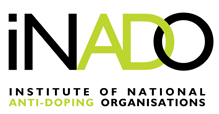Impact of the UGT2B17 polymorphism on the steroid profile. Results of a crossover clinical trial in athletes submitted to testosterone administration / Pilar Martín-Escudero, Jesús A. Muñoz-Guerra, Soledad Vargas García-Tenorio, Ester Serrano Garde, Ana B. Soldevilla-Navarro, Mercedes Galindo-Canales, Nayade Prado, Manuel E. Fuentes-Ferrer, Cristina Fernández-Pérez. - (Steroids 141 (2019) January; p. 104-113)
- PMID: 30503386
- DOI: 10.1016/j.steroids.2018.11.009
Abstract
This article studies the genetic influence of polymorphism of the UGT2B17 gen on the urinary steroid profile and its implications for the anti-doping field. The study presents the results of a triple-blind randomized placebo-controlled crossover trial with healthy athletes submitted to a single dose of 250 mg of testosterone cypionate. Forty urine samples were collected from each participant. Mass spectrometry-based techniques commonly used in Anti-Doping laboratories, were employed to measure the urinary concentration and the Δδ13C values of a selection of target compounds for testosterone (T) administration together with LH. Twelve volunteers were included in the study; the polymorphism was evenly distributed among them. After T administration, the most meaningful change affected the Testosterone/Epitestosterone ratio (T/E) and the urinary concentration of LH. In relation with T/E, the wild type homozygous (ins/ins) group there was a mean relative increase of 30 (CI 95%: 25.2 to 36.7); in the heterozygous mutant (del/ins) group it was 19.8 (CI 95%:15.9 to 24.7); and in the homozygous mutant (del/del) group it was 19.7 (CI 95% 14.9 to 26.2). In the case of LH, it́s observed how LH values decrease significantly after the administration of Testex homogeneously among the three groups. The main outcome was related to the (del/del) group (homozygous mutant), where due to the depressed basal level of the steroid profile, if the longitudinal steroid profile of the athlete was not available, the analysis by GC/MS would not produce an "atypical" result according to the WADA TD2016EAAS despite the T administration. However, the genotyping of the UGT2B17 polymorphism, the follow up of LH and the use of GC-C-IRMS makes it possible to identify most of these samples as Adverse.
